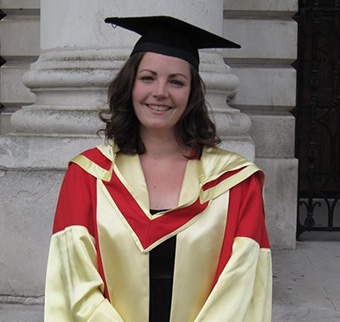Dublin PhD student discovers new kind of MRSA
Discovery one of several highly significant contributions to the field
Dublin Dental University Hospital (DDUH) PhD student discovered a totally new kind of MRSA during research for her doctorate.
Emily Deasy’s project was entitled: ‘Molecular typing of methicillin resistant Staphylococcus aureus (MRSA) and methicillin-susceptible S. aureus (MSSA) and coagulase-negative staphylococci (CoNS) recovered in Irish hospitals and characterisation of SCCmec and SCCmec-containing composite islands.’
In the summary to her research she wrote: “Staphylococcus aureus, especially MRSA, are major causes of hospital-acquired infection in Ireland with significant associated patient morbidity and mortality. Apart from the human cost, MRSA costs the Irish healthcare sector many millions of Euro each year. Understanding the evolution of staphylococci can provide valuable insights into the development of antibiotic resistance and the emergence of new strains and is vital for effective infection prevention and control.”
During her work, Emily undertook a comprehensive molecular analysis of MRSA MSSA and CoNS isolates from Irish hospitals. Her research made several highly significant contributions to the current understanding of the biology and evolution of staphylococci. These include the discovery of a totally new kind of MRSA (termed mecC MRSA) that is undetectable using conventional MRSA detection systems. mecC-positive MRSA are highly divergent genetically, evolved in animal reservoirs and have recently transferred into the human population and are now known to be prevalent across Europe.
Emily’s research has been published in three papers in international peer-review journals, the Journal of Hospital Infection in the UK and twice in the American Society for MIcrobiology’s publication Antimicrobial Agents and Chemotherapy
References:
Creamer et al. J Hosp Infect. 2014 Mar;86(3):201-8
Shore et al. Antimicrob Agents Chemother. 2012 Oct;56(10):5340-55.
Shore et al. Antimicrob Agents Chemother. 2011 Aug;55(8):3765-73.
